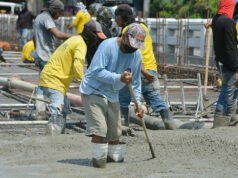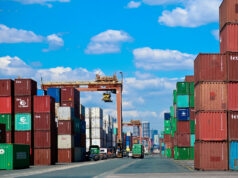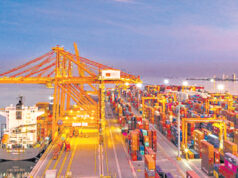What New Clark City can learn from Putrajaya
By Janina C. Lim
Reporter
PUTRAJAYA, MALAYSIA — More than two decades ago, Kuala Lumpur grappled with traffic congestion, similar to what Metro Manila continues to face today. The Malaysian government had noted traffic was affecting the operations of administrative government offices in the capital, prompting then-Prime Minister Mahathir bin Mohamad to propose the creation of a new city as a solution.
Putrajaya, whose name means “prince of success” in English, is now the federal administrative capital of Malaysia. Formerly the Prang Besar Estate of palm oil and rubber plantation, the planned “green” city spans 4,000 hectares.
“The city is built for the current generation but it will also support the future generation. This is where everything is accessible,” Putrajaya Holdings Sdn Bhd General Manager Mhd Zaini Mohd Mukhtar told Manila-based journalists while on a cruise along Putrajaya’s 650-hectare man-made lake last month.
The conception of the lake, considered Putrajaya’s jewel, has a history.
“When the first proposal was presented to the government at the time, a small lake was presented to the prime minister and cabinet ministers. The prime minister said, ‘No, I want a huge lake. I want to create an island.’ And that created this 38-kilometer waterfront development now,” the official added.
Putrajaya Holdings is a private company created by the Malaysian government to develop the city’s master plan and finance it. In return, the government leases its office buildings for 25 years, and will be transferred under its ownership. The company is also given commercial land in exchange for the development and design of the government infrastructure.
For the development, foreign contractors were tapped to develop areas such as wetlands, since Malaysian companies lacked the expertise to do so at that time.
Today, the wetlands play a big role in Putrjaya as it filters pollutants from the river upstream. Mr. Mukhtar said the filtration system alone cost around $200 million.
LEARNING BY EXAMPLE
Lessons from Putrajaya’s past would be crucial for MTD Capital Berhad, which is looking to replicate its success with its project in Clark Special Economic Zone through its local units AlloyMTD Holdings Philippines, Inc. and MTD Philippines, Inc.
For the firm, establishing a city requires more than allowing just offices and commercial spaces to thrive.
“You build a community around them. You put a park there, school, religious places. Later on, slowly but surely, put up places of interest,” said Patrick Nicholas P. David, president for both AlloyMTD Holdings Philippines and MTD Philippines.
That the Masjid Putra, the planned city’s most popular mosque, was one of the first infrastructure to rise, also speaks of Putrajaya Holdings’ awareness of the community for whom it is building.
In addition, Putrajaya has about 37.4% of its area devoted to parks and green spaces, well above the average 15% to 30% that real estate developers allocate for green spaces.
Mr. David, however, acknowledged that a lot has to be done to encourage people to move to New Clark City. He noted it would be a smart move for the government if it will be done in phases.
“You don’t want to paralyze Metro Manila. It’s like the pack up center for the entire country,” Mr. David said.
He noted the much-anticipated Southeast Asian games in November 2019 will serve as the company’s first effort to market the development.
The internationally certified sports complex will be part of the first phase or Phase1A of the so-called National Government Administrative Center (NGAC) which will span 40 hectares. It will consist of an stadium capable of seating 20,000 people; a hub for athletic and aquatic sports; and a village that can house athletes.
“When you introduce a city, it’s best you introduce it through an international event seen worldwide,” Mr. David added.
For Putrajaya, it took 20 years before it can populate itself with 100,000 residents — a figure which is expected to double within the next five years through the expansion of office spaces and other projects.
“In accelerating and creating more vibrancy of the commercial development, we have identified the area which is opposite the mosque as the new growth area, and the place to be as far as Putrajaya is concerned where we injected mixed development,” Mr. Mukhtar said, adding that it will consist of retail spaces, residential units, restaurants, among others.
“We hope to complete this by 2022, along with MRT station,” he added, referring to the Putrajaya Sentral MRT (Mass Rapid Transit) station.
Nestled about 20 kilometers between the Kuala Lumpur airport and the heart of the capital, Putrajaya’s strategic transport location made it a viable area for the new city.
A similar thinking is behind AlloyMTD Group’s vision for Clark’s NGAC as it complements other big-ticket infrastructure projects such as the expanded Clark International Airport and the Subic Clark Cargo Railway — both intended to provide transport interconnectivity not just in the province but in the whole country.
“Clark is on its way to becoming Asia’s next aerotropolis with the development not only of the airport, but the Clark Freeport as well, and the construction of the first smart, green, and resilient New Clark City (NCC),” Bases Conversion and Development Authority Senior Vice-President for Business Development and Operations Group Joshua M. Bingcang said in a recent statement.
For now, the Philippine company said it will still continue to develop the project “slowly but surely” and in accordance with the government’s master plan for New Clark City.



